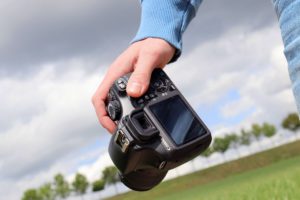Weddings are undoubtedly one of the most significant and cherished moments in a couple’s life. Capturing these precious moments through photography is essential to ensure they can be revisited and cherished for years to come. Wedding photoshoots require careful planning and execution to capture the emotions, love, and beauty of the day. These are seven essential dos and don’ts for a successful wedding photoshoot.
Do: Plan and Communicate
Planning is the cornerstone of a successful wedding photoshoot. It involves pre-shoot meetings with the couple to understand their preferences, vision, and expectations. Clear communication is key in these meetings, as it helps establish trust and ensures that both parties are on the same page. Discuss the wedding schedule, location, preferred styles, and any special requests. This initial step will help you create a tailored plan for the photoshoot.
Don’t: Assume and Guess
Never assume that you know what the couple wants without proper communication. Assuming can lead to misunderstandings and disappointment. Always ask questions, clarify doubts, and ensure that your understanding matches the couple’s expectations. Clear communication is the foundation of a successful wedding photoshoot.
Do: Scout the Location

Familiarising yourself with the wedding venue is essential. Visit the location ahead of time to identify the best spots for photographs, assess lighting conditions, and anticipate potential challenges. This reconnaissance will help you plan your shots and adapt to any unforeseen circumstances on the big day.
Don’t: Rely Solely on Equipment
While having high-quality cameras and lenses is important, it’s equally crucial not to rely solely on your equipment. Fancy gear won’t make up for poor composition, bad timing, or inadequate preparation. It’s best to think in advance about how you are going to use the tech you have. For example, if you have a Leica digital camera, then try to learn about all its features and how you can make the most of it. Leica cameras are a great choice for professional photoshoots. Remember – the more you know about your equipment, the more elements you will be able to incorporate to take beautiful photos.
Do: Capture Candid Moments
Candid shots often provide the most authentic and emotional photographs. Encourage the couple to relax and be themselves and be ready to capture spontaneous moments. Candid shots can convey genuine emotions, laughter, and love, making them invaluable in a wedding album.
Don’t: Overdirect
Avoid being overly controlling or directive during the photoshoot. While some level of direction is necessary for posed shots, too much can make the couple feel uncomfortable, and the photos appear staged. Strike a balance between giving guidance and allowing natural moments to unfold.
Do: Manage Group Photos Efficiently
Group photos are a significant part of any wedding album. Create a list of desired group shots in advance, including combinations of family members and friends. Appoint a family member or friend who knows the guests to help gather people for these shots, making the process smoother and quicker.
Don’t Delay Group Photos
Time is of the essence during a wedding, and delays can disrupt the schedule and cause frustration. Avoid keeping guests waiting for too long during group photos. Be organised, stick to your list, and work swiftly to ensure that the process is as efficient as possible.
Do: Pay Attention to Lighting
Understanding and manipulating light is fundamental to great photography. Pay close attention to natural lighting conditions and consider bringing additional lighting equipment if needed. Use diffusers, reflectors, and off-camera flashes to create flattering and well-balanced light in both indoor and outdoor settings.
Don’t Ignore Environmental Factors
Environmental factors like harsh sunlight, rain, or dimly lit indoor spaces can present challenges. Don’t ignore these factors; instead, adapt and make the most of the situation. Be prepared with the appropriate gear and techniques to overcome these obstacles and still capture beautiful images.
Do: Be Prepared for Unpredictability
Weddings are filled with unpredictable moments, from sudden weather changes to unexpected delays. As a photographer, you must remain calm and adaptable. Have backup equipment, extra memory cards, and contingency plans in place. Be ready to pivot and capture the beauty of the day, even when things don’t go as planned.
If the event is in the afternoon, then don’t forget to wear sunscreen in Australia. It’s going to be a long day. A high-quality Australian sunscreen will protect your skin from UV rays, and you can fully focus on your work.
Don’t: Panic Under Pressure
Weddings can be stressful, but panicking under pressure is counterproductive. Stay composed and focused on your role as a photographer. Remember that your calm demeanour will help put the couple at ease and ensure a smoother photoshoot.
Do: Edit and Deliver Promptly
After the wedding, don’t neglect the post-processing phase. Editing is where you refine and enhance your photographs to make them truly shine. Pay attention to colour correction, cropping, and retouching while maintaining the couple’s natural beauty. Deliver the final images promptly, as the newlyweds are eager to relive their special day through your work.
Don’t Overdo Editing
While editing is essential, it’s crucial not to overdo it. Excessive retouching can make photos look unnatural and detract from their authenticity. Maintain a balance between enhancement and preservation of the genuine moments you captured.
In a nutshell, a successful wedding photoshoot requires a combination of planning, communication, technical skills, and adaptability. By following these dos and don’ts, photographers can ensure that they capture the essence of the day while providing couples with cherished memories that will last a lifetime. Remember, each wedding is unique, and flexibility is key to creating beautiful and memorable photographs.

